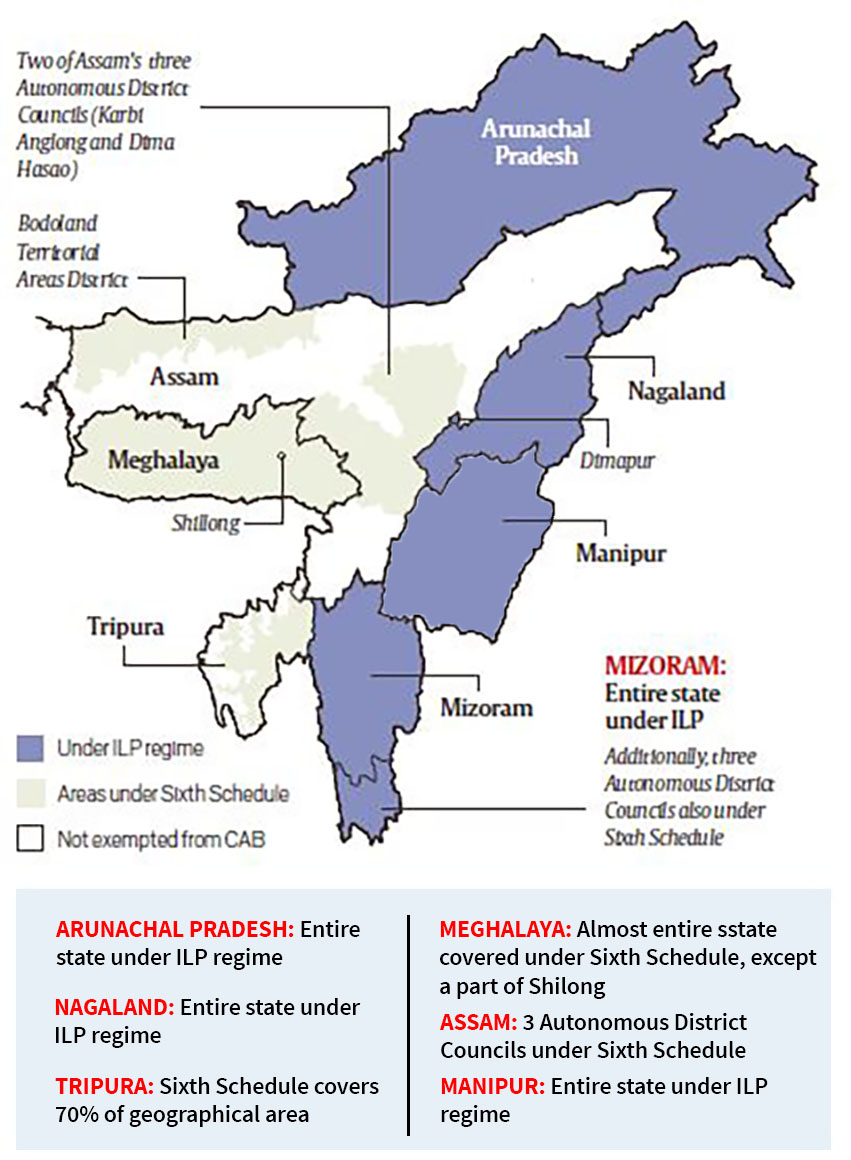Governance
Nagaland Extends ILP in Dimapur
- 11 Dec 2019
- 3 min read
Why in News
Recently, the Nagaland government has extended the Inner Line Permit (ILP) system to the district of Dimapur.
- This step was taken to exempt the entire district from the purview of the Citizenship Amendment Bill (CAB).
- So far, Dimapur was the only place in Nagaland which was not under the ILP system because the district is a commercial hub and has a mixed population (often referred to as ‘Mini India’).
- Recently Manipur has also been brought under the purview of ILP System. Thus, the entire northeast India has been exempted from CAB except for Sikkim and non-tribal areas in Assam and Tripura.
Key Points
- The extension of ILP to Dimapur has been issued under section 2 of the Bengal Eastern Frontier Regulation, 1873 by the governor of Nagaland.
- The extension of the ILP regime makes it mandatory for “every non-indigenous person” who entered the district after November 21, 1979, to obtain an ILP within 90 days.
- Exemptions:
- Any non-indigenous persons living in Dimapur prior to November 21, 1979, with a certificate from the Deputy Commissioner.
- Any non-indigenous person passing through Dimapur to other states as a transit passenger with a valid document.
Citizenship Amendment Bill,2019 and North-East India
- Protected by the ILP System: Nagaland, Arunachal Pradesh, Manipur and Mizoram have been exempted from the provisions of the Citizenship Amendment Bill (CAB), 2019
- Sixth Schedule Areas: The whole of Meghalaya (except a part of Shillong), Mizoram and the tribal areas of Tripura and Assam are also exempted from the CAB.
- The Sixth Schedule contains special provisions for the administration of tribal areas in the four north-eastern states of Assam, Meghalaya, Tripura and Mizoram.
Inner Line Permit
- Inner Line Permit is an official travel document issued by the concerned State Government to allow inward travel of an Indian citizen into a protected/restricted area for a limited period.
- It is a special permit required by “outsiders” from other regions of the country to enter the notified states.
- It is based on the Bengal Eastern Frontier Regulation Act (BEFR), 1873.
- This act was enacted during the British era to protect the British interests from the hill tribals who used to invade the British subjects.
- An imaginary line known as the inner-line was created to divide between the two communities so that neither party could go beyond the line without a permit from the appropriate authorities.





